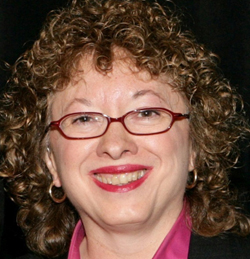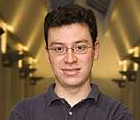In order to manufacture products using nanoparticles, you need a way to measure and analyze them to ensure consistency and control quality. Until now, those devices were expensive and time-consuming.
Sean Race and his partner, David Fairhurst, have developed a particle analyzer with the trade name Acorn Area. It uses nuclear magnetic resonance (NMR), similar to an MRI, to measure nanoparticles in the same concentration in which they will be used in manufacturing.
Their company, XiGo Nanotools, founded in 2005, now serves clients all over the world in the energy, pharmaceutical, pigments and coatings, and electronics industries.
Race holds a Chemical Engineering degree from the University of Massachusetts and an MBA from the Wharton School of University of Pennsylvania.
What inspired you to start XiGo Nanotools?
I worked in scientific equipment for a long time. There are great opportunities in this field if you’re in the right place at the right time.
About 10 years ago, I was involved in a company that was sold, so I had some time on my hands. My partner and I recognized that nanotechnology was something that was going to be used more in the future, and there was still no good tool kit for scientists to optimize product performance in nanotechnology.
We thought it would be a good time to come up with a device that would meet the needs of scientists involved in nanotechnology. The market has grown exponentially, and I think you’ll see in the next five years a plethora of new nanotechnology-based materials coming out in the market. People make materials in R&D, then figure out how to make them in large quantities.
So, we looked at the technology available to measure nanoparticles, and we found that NMR had some advantages. You can measure rapidly and you can measure concentrated materials.
It took about four years to develop the product. We started the company in 2005 and started selling the product about four years ago.
What resources did you take advantage of to start and grow your company?
Initially we put some of our own money into the company, along with an angel investor group. Ben Franklin Technology Partners [of Northeast Pennsylvania] were crucial in starting the company — they have been an ardent supporter of ours for a long time.
One of the key principals at Ben Franklin had worked in a particle characterization lab previously. The most comparable metric takes three or four hours to measure the surface of nanoparticles. When we said we could build a device that can do that in a few minutes, they were interested. They understood the unmet needs we were trying to address, so it was an easy sell for us.
Ben Franklin Tech Partners is our largest investor, with investments in four years starting in 2007. [They have] given us space in the Ben Franklin Tech Ventures building on the Lehigh University campus. It’s a great space, with a turnkey lab available, and great shared resources. They’ve also introduced us to investors and strategic partners.
What was the biggest challenge in getting your company off the ground?
We make a device for a niche market, so it won’t be a billion-dollar company. In raising capital, people invest in what they know. So unless they have experience in this field, they’re hesitant to get involved. We’re talking about a marketplace that people really don’t understand.
We serve multibillion-dollar markets, like the energy market and the pharmaceutical market. Our customers are companies that everyone recognizes. But people don’t understand the challenges those companies face on a daily basis. For someone to really understand our business they need to understand the materials marketplace. That’s challenging. A 90-second elevator pitch works for shoes, but not for nanotechnology. And it’s difficult to do search-engine optimization for this product, since people don’t know it exists.
How has your company grown?
Our sales showed 60 percent growth in 2012 over 2011; 2013 orders were comparable to 2012.
We now have nine full- and part-time employees.
Our customers are located all over the world. For example, one of our devices is being evaluated by a manufacturing plant in Europe for use in making sure the material that goes into electric car batteries is appropriate, hour after hour, day after day.
What’s next for XiGo Nanotools?
The process market will be very interesting for us, and we’re forming relationships with companies involved in this sector. Another big area is in manufacturing better inks for electronics and imaging.
Writer: Susan L. Pena

↑ Top


